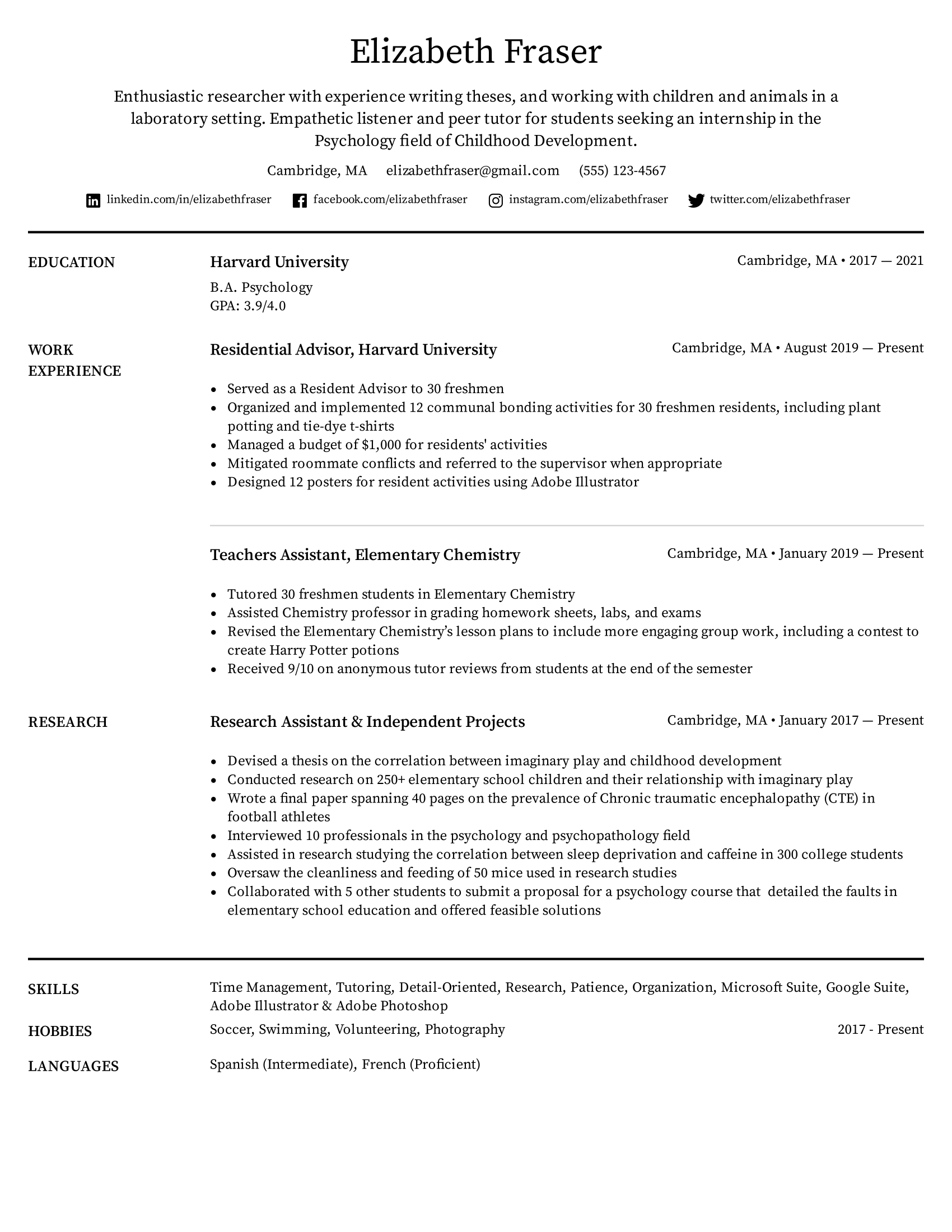Simple Resume Templates
Using a simple resume template design is an ideal format for outlining your work history and focusing on your career accomplishments.

Using a simple resume template design is an ideal format for outlining your work history and focusing on your career accomplishments.












Don’t underestimate these templates because of the adjective “simple.”
Simple resumes follow a clear, straightforward resume format that draws the recruiter into your experiences.
These templates erase extraneous information and embellishments in order highlight you and your career accomplishments.
Furthermore, because of its versatility, simple resumes work for nearly any industry or job application.
The types of fonts on a simple resume are classic, demonstrating austerity and improving scannability. This also means that your content is the focal point of the piece, so your resume must be strongly written.
Tip: Be sure to quantify your experiences (i.e., “Managed a team of 20 employees,” or “Cleaned and refreshed 30 hotel rooms a day to meet and exceed customers’ expectations”).
If you're seeking a job in industries such as:
There's a high chance that you need to use a simple resume template.
Individuals with no work experience, like a college student or someone returning to the workforce after a hiatus, can benefit from using a simpler resume template. This is because a simple template design will help emphasize your skills, showing a recruiter what you can do — despite a seeming lack of “experience.”
Additionally, simple resumes are best if you’re applying for an entry-level job or a position in food-service or the retail industry. These templates communicate that you are organized and eager to get started.
Tip: Since simple templates lack bold colors and flowery fonts, use strong verbs to make your resume stand out. Check out our list of action-packed verbs to get started.

Easy Resume offers a variety of simple resume templates suited to all industries and levels of experience.
For more help writing a resume, look no further than our guide on How to Write the Perfect Resume in 2020.